Grow More Carrots at Home – wouldn’t that be a dream come true? Imagine baskets overflowing with vibrant, sweet carrots, all grown with your own two hands! Forget those bland, store-bought carrots; we’re talking about homegrown goodness bursting with flavor. For centuries, carrots have been a staple in diets around the world, from ancient Rome where they were prized for their medicinal properties to the vibrant orange varieties cultivated in the Netherlands that we know and love today.
But let’s be honest, sometimes getting a bountiful carrot harvest feels like a real challenge. You plant the seeds, water diligently, and yet… you end up with tiny, misshapen carrots, or worse, nothing at all! That’s where these DIY tricks and hacks come in. I’m going to share some simple, yet incredibly effective, techniques that will help you grow more carrots at home than you ever thought possible.
Whether you’re a seasoned gardener or just starting out, these tips will empower you to maximize your carrot yield. We’ll cover everything from soil preparation and seed spacing to watering techniques and pest control. Get ready to transform your garden into a carrot-growing paradise!
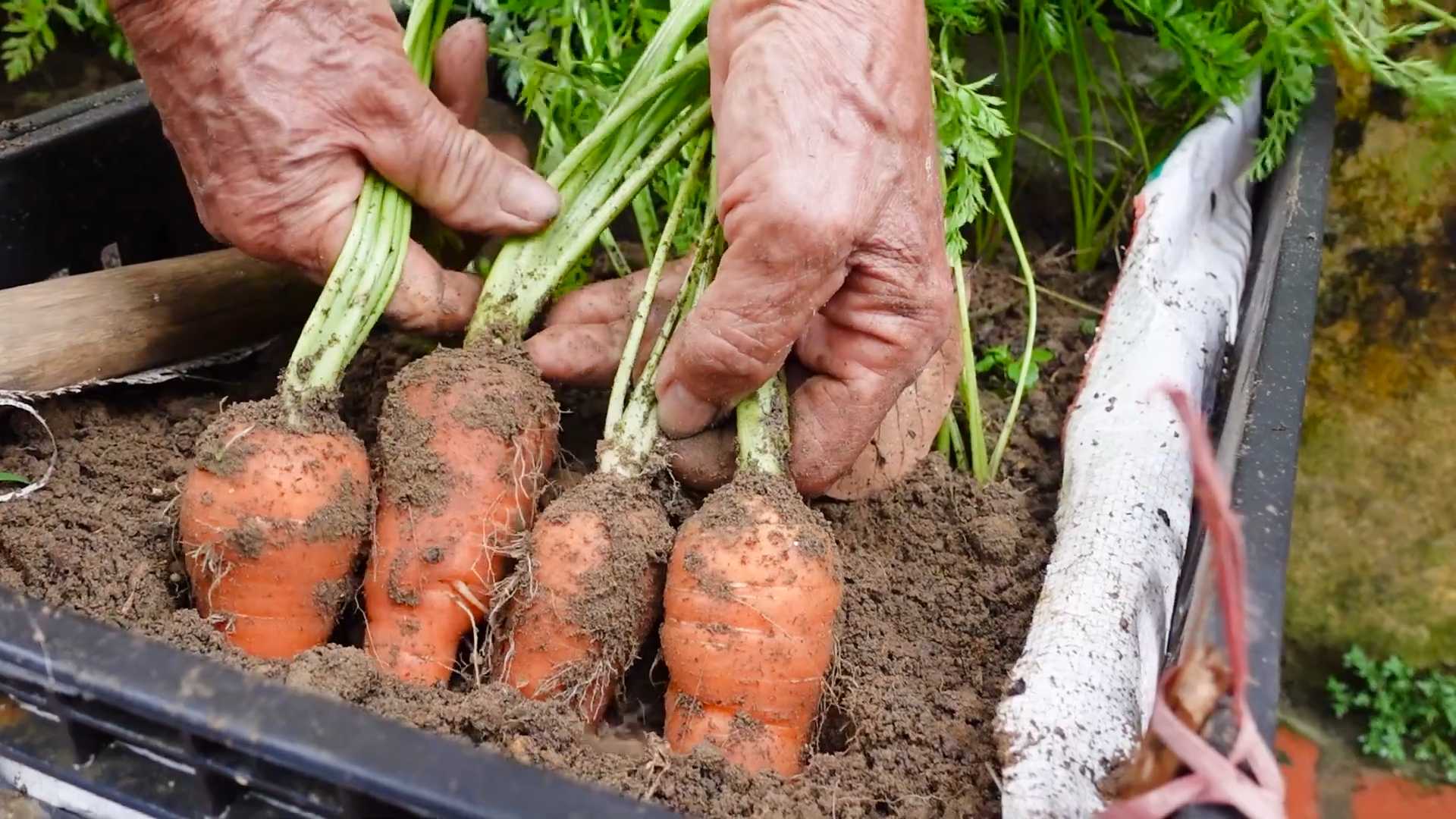
Grow More Carrots at Home: A DIY Guide to Bumper Crops
Hey there, fellow gardening enthusiasts! Are you tired of those tiny, sad carrots you get from the grocery store? Do you dream of pulling up armfuls of vibrant, sweet carrots from your own backyard? Well, you’ve come to the right place! I’m going to share all my secrets for growing a truly impressive carrot harvest right at home. It’s easier than you think, and the taste difference is absolutely worth the effort.
Choosing the Right Carrot Variety
First things first, let’s talk carrots! Not all carrots are created equal. Choosing the right variety for your climate and soil is crucial for success. Here’s a quick rundown of some popular types:
* Nantes: These are my go-to! They’re cylindrical, sweet, and mature quickly. Perfect for beginners and those with heavy soil.
* Danvers: Classic, tapered carrots with a strong flavor. They store well and are great for juicing.
* Chantenay: Short, stout carrots that are ideal for shallow or rocky soil. They’re also very sweet.
* Imperator: The long, slender carrots you often see in supermarkets. They require loose, well-drained soil.
* Round/Parisian: Cute, bite-sized carrots that are perfect for containers or small gardens.
Consider your soil type, growing season length, and personal preferences when making your choice. I usually opt for a mix of Nantes and Chantenay to cover all my bases.
Preparing the Soil: The Key to Carrot Success
Carrots are notoriously picky about their soil. They need loose, well-drained soil that’s free of rocks and clumps. This is probably the most important step, so don’t skimp on the preparation!
* Soil Testing: Before you do anything, get your soil tested! This will tell you the pH level and nutrient content, allowing you to amend it accordingly. Carrots prefer a slightly acidic soil with a pH between 6.0 and 6.8.
* Clearing the Area: Remove any rocks, roots, or debris from the planting area. Even small stones can cause carrots to fork or become misshapen.
* Loosening the Soil: This is where the real work begins! Use a garden fork or tiller to loosen the soil to a depth of at least 12 inches. The deeper, the better!
* Amending the Soil: Carrots love well-rotted compost. Incorporate a generous amount into the soil to improve drainage and fertility. Avoid using fresh manure, as it can cause forking. You can also add sand or peat moss to improve drainage if your soil is heavy clay.
* Creating Raised Beds (Optional): If you have particularly poor soil or drainage issues, consider creating raised beds. This will give your carrots the ideal growing environment.
Sowing the Seeds: Patience is a Virtue
Carrot seeds are tiny and can be tricky to handle. But with a little patience and these tips, you’ll be sowing like a pro in no time!
* Timing is Everything: Carrots are a cool-season crop, so plant them in early spring or late summer for a fall harvest. Check your local frost dates to determine the best planting time for your area.
* Creating Furrows: Use a hoe or trowel to create shallow furrows about 1/4 to 1/2 inch deep and 2-3 inches apart.
* Sowing the Seeds: Sprinkle the seeds thinly along the furrows. Carrot seeds are notoriously small, so don’t worry about being too precise. You can always thin them later.
* Covering the Seeds: Gently cover the seeds with a thin layer of soil or vermiculite.
* Watering: Water the area thoroughly with a gentle spray. Keep the soil consistently moist until the seeds germinate.
* Marking the Rows: Label your rows so you know what you’ve planted!
Thinning the Seedlings: Crucial for Carrot Development
This is probably the most difficult part for me, because it feels like I’m killing baby plants! But trust me, thinning is essential for giving your carrots enough space to grow.
* When to Thin: Once the seedlings are about 2 inches tall, it’s time to thin them.
* How to Thin: Gently pull out the weaker seedlings, leaving about 1-2 inches between the remaining plants.
* Second Thinning (Optional): When the carrots are about 4 inches tall, you can thin them again, leaving about 3-4 inches between plants. This will give them even more room to develop.
* Don’t Waste the Thinnings!: The young carrot greens are edible! Add them to salads or use them in pesto.
Watering and Weeding: Keeping Your Carrots Happy
Consistent watering and diligent weeding are essential for a healthy carrot crop.
* Watering: Carrots need consistent moisture, especially during germination and early growth. Water deeply and regularly, aiming for about 1 inch of water per week. Avoid overhead watering, as it can promote fungal diseases.
* Weeding: Weeds compete with carrots for nutrients and water, so it’s important to keep the area weed-free. Hand-pull weeds carefully to avoid disturbing the carrot roots. Mulching with straw or grass clippings can also help suppress weeds.
Fertilizing: Giving Your Carrots a Boost
While carrots don’t need a lot of fertilizer, a little boost can help them grow bigger and sweeter.
* Side-Dressing: About halfway through the growing season, side-dress your carrots with a balanced fertilizer or compost tea.
* Avoid High-Nitrogen Fertilizers: Too much nitrogen can cause excessive top growth and small, forked roots.
Pest and Disease Control: Protecting Your Crop
Carrots are generally pest-resistant, but there are a few common problems to watch out for.
* Carrot Rust Fly: This is the most common carrot pest. The larvae tunnel into the roots, causing damage and decay. Cover your carrots with row covers to prevent the flies from laying their eggs.
* Nematodes: These microscopic worms can damage carrot roots. Rotate your crops and amend the soil with organic matter to control nematodes.
* Leaf Spot Diseases: These fungal diseases can cause spots on the leaves. Improve air circulation and avoid overhead watering to prevent leaf spot diseases.
Harvesting: The Sweet Reward
The moment you’ve been waiting for! Harvesting your own homegrown carrots is incredibly satisfying.
* When to Harvest: Carrots are typically ready to harvest 60-80 days after planting, depending on the variety. Check the seed packet for specific maturity dates.
* How to Harvest: Gently loosen the soil around the carrots with a garden fork. Then, grasp the tops of the carrots and pull them straight up. If the soil is dry, water the area before harvesting to make it easier to pull the carrots.
* Storing Your Carrots: Remove the tops and gently brush off any excess soil. Store the carrots in a cool, dark, and humid place, such as a refrigerator or root cellar. They can last for several months if stored properly.
Troubleshooting: Common Carrot Growing Problems
Even with the best planning, things can sometimes go wrong. Here are some common carrot growing problems and how to fix them:
* Forked or Misshapen Carrots: This is usually caused by rocks or compacted soil. Make sure to prepare the soil thoroughly before planting.
* Small Carrots: This can be caused by overcrowding, poor soil, or lack of water. Thin your seedlings, amend the soil with compost, and water regularly.
* Bitter Carrots: This can be caused by hot weather or inconsistent watering. Provide shade during the hottest part of the day and water deeply and regularly.
* Cracked Carrots: This is usually caused by uneven watering. Water deeply and regularly, especially during dry spells.
Enjoying Your Harvest: From Garden to Table
Now that you’ve harvested your beautiful carrots, it’s time to enjoy them! Here are just a few ideas:
* Eat them raw: Freshly harvested carrots are incredibly sweet and crunchy.
* Roast them: Roasting carrots brings out their natural sweetness.
* Steam them: Steamed carrots are a healthy and delicious side dish.
* Juice them: Carrot juice is packed with vitamins and nutrients.
* Add them to soups and stews: Carrots add flavor and texture to soups and stews.
* Make carrot cake: A classic dessert that’s always a crowd-pleaser.
Growing your own carrots is a rewarding experience that will provide you with fresh, delicious vegetables all season long. With a little planning and effort, you can enjoy a bumper crop of carrots that are far superior to anything you can buy in the store. So get out there and start planting!
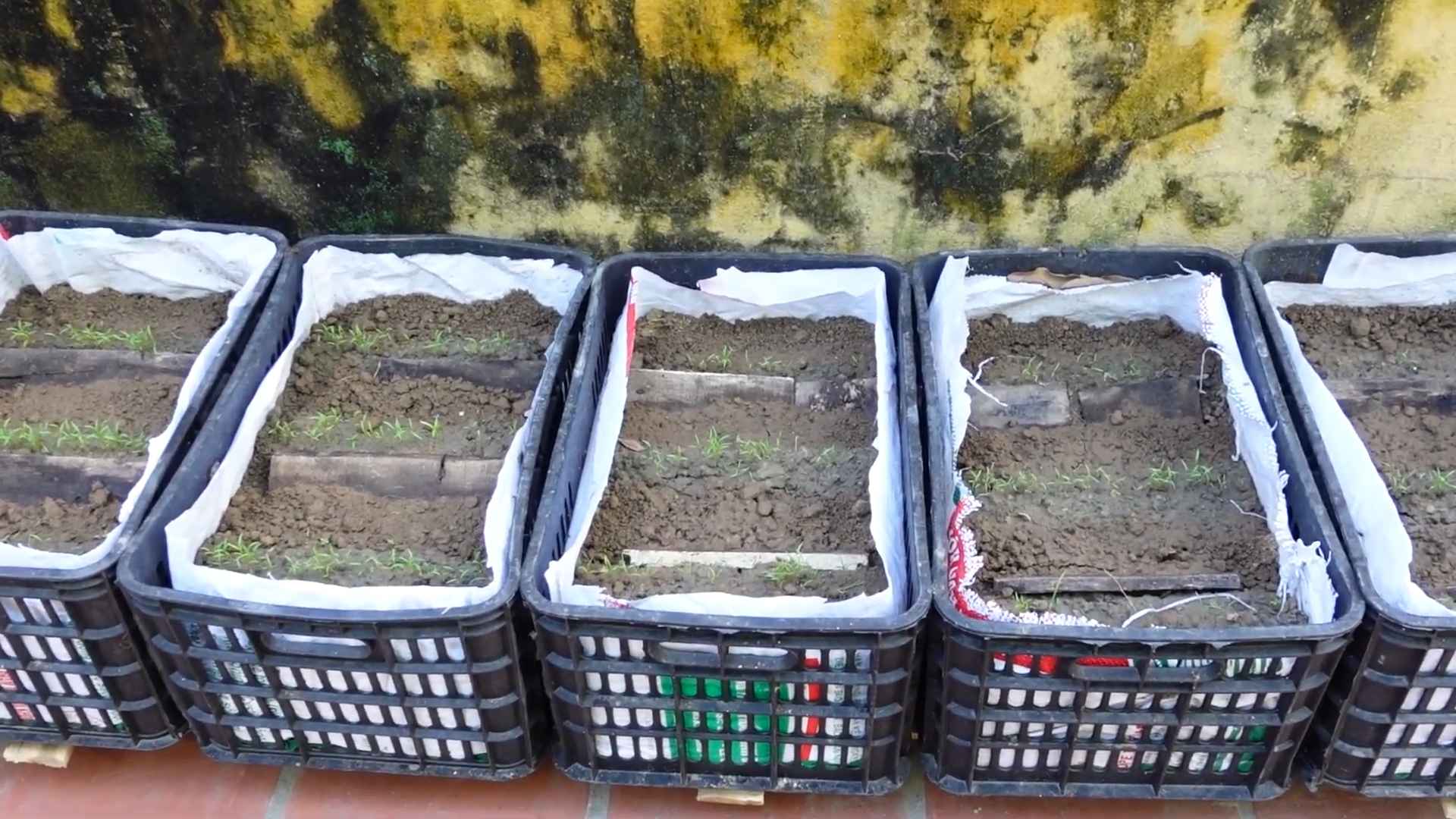
Conclusion
So, there you have it! Growing more carrots at home doesn’t have to be a gamble. By implementing these simple yet effective techniques, you’re not just planting seeds; you’re cultivating a thriving carrot patch that will reward you with an abundance of sweet, crisp, and vibrant roots. Forget those bland, store-bought carrots – imagine the satisfaction of harvesting your own, knowing exactly where they came from and how they were nurtured.
This DIY approach to maximizing your carrot yield is a must-try for several reasons. First, it empowers you to take control of your food source, reducing your reliance on commercial agriculture and promoting a more sustainable lifestyle. Second, it’s incredibly cost-effective. With a few readily available materials and a little bit of elbow grease, you can significantly increase your harvest without breaking the bank. Third, and perhaps most importantly, it’s incredibly rewarding. There’s nothing quite like the feeling of pulling a perfectly formed carrot from the earth, knowing that you played a direct role in its creation.
But don’t stop there! Experiment with different carrot varieties to find your favorites. Try Nantes for their cylindrical shape and sweet flavor, or Danvers for their classic tapered form and excellent storage capabilities. Consider companion planting to further enhance your carrot growth. Marigolds can deter nematodes, while onions and garlic can repel carrot root flies. You can also explore different soil amendments to tailor the growing conditions to your specific needs. Adding compost or well-rotted manure can provide essential nutrients and improve soil drainage.
We’re confident that these tips will transform your carrot-growing experience. But the real magic happens when you put them into practice. So, grab your seeds, prepare your soil, and get ready to witness the incredible potential of your own backyard garden. Don’t be afraid to experiment, adapt, and learn from your mistakes. Gardening is a journey, not a destination, and every season brings new opportunities for growth and discovery.
We encourage you to try this DIY trick for growing more carrots at home and share your experiences with us! Let us know what worked for you, what challenges you faced, and any other tips or tricks you’ve discovered along the way. Your insights can help other gardeners achieve their carrot-growing dreams. Share your photos, stories, and questions in the comments below. Let’s build a community of passionate carrot growers and learn from each other’s successes and failures. Together, we can unlock the secrets to a bountiful carrot harvest and enjoy the delicious rewards of our labor. Happy gardening!
Frequently Asked Questions (FAQ)
What is the best time of year to plant carrots?
The best time to plant carrots depends on your climate. In general, carrots are a cool-season crop and thrive in temperatures between 60°F and 70°F (15°C and 21°C). For most regions, this means planting in early spring or late summer/early fall. Spring plantings should occur as soon as the soil can be worked, typically a few weeks before the last expected frost. Fall plantings should be timed so that the carrots have enough time to mature before the first hard frost. In warmer climates, you may be able to grow carrots year-round, but you’ll need to provide shade during the hottest months. Check your local planting calendar for specific recommendations based on your region’s climate.
What kind of soil is best for growing carrots?
Carrots need loose, well-drained soil to grow properly. Rocky or compacted soil can cause the roots to become stunted, forked, or misshapen. The ideal soil for carrots is sandy loam, which is a mixture of sand, silt, and clay. This type of soil provides good drainage while still retaining enough moisture to support plant growth. Before planting, amend your soil with compost or well-rotted manure to improve its structure and fertility. Avoid using fresh manure, as it can burn the roots of young plants. The soil pH should be between 6.0 and 6.8 for optimal carrot growth.
How often should I water my carrots?
Carrots need consistent moisture to thrive, especially during germination and early growth. Water deeply and regularly, aiming to keep the soil consistently moist but not waterlogged. The frequency of watering will depend on your climate, soil type, and the stage of growth. In general, water deeply once or twice a week, or more often during hot, dry weather. Use a soaker hose or drip irrigation to deliver water directly to the roots and avoid wetting the foliage, which can promote fungal diseases. Check the soil moisture regularly by sticking your finger into the soil a few inches deep. If the soil feels dry to the touch, it’s time to water.
Why are my carrots forked or stunted?
Forked or stunted carrots are often caused by compacted soil or the presence of rocks or other obstacles in the soil. When the roots encounter resistance, they split or become deformed. To prevent this, make sure to prepare your soil thoroughly before planting, removing any rocks, clumps of soil, or other debris. Amend the soil with compost or well-rotted manure to improve its structure and drainage. Another possible cause of forked carrots is excessive nitrogen in the soil. Avoid using fertilizers that are high in nitrogen, as this can promote leafy growth at the expense of root development.
How do I protect my carrots from pests and diseases?
Carrots are susceptible to a variety of pests and diseases, including carrot root flies, nematodes, and fungal diseases. To protect your carrots, practice good garden hygiene, such as removing weeds and debris that can harbor pests and diseases. Use row covers to prevent carrot root flies from laying their eggs near your plants. Companion planting with marigolds can help deter nematodes. Ensure proper spacing between plants to promote good air circulation and reduce the risk of fungal diseases. If you notice signs of pests or diseases, take action promptly. Use organic pest control methods, such as insecticidal soap or neem oil, to control pests. Remove and destroy any infected plants to prevent the spread of disease. Crop rotation can also help to reduce the buildup of pests and diseases in the soil.
Can I grow carrots in containers?
Yes, you can grow carrots in containers, as long as you choose a container that is deep enough to accommodate the roots. Select a container that is at least 12 inches deep and wide. Fill the container with a well-draining potting mix. Choose carrot varieties that are shorter and more compact, such as Nantes or Thumbelina. Water regularly and fertilize every few weeks with a balanced fertilizer. Place the container in a sunny location that receives at least 6 hours of sunlight per day. Container-grown carrots may require more frequent watering than those grown in the ground, as the soil in containers tends to dry out more quickly.
How do I know when my carrots are ready to harvest?
Carrots are typically ready to harvest when they reach the desired size and color. The maturity time will vary depending on the variety and growing conditions. Check the seed packet for specific information on the expected maturity time. You can also gently pull back the soil around the top of the carrot to check its size. Carrots are generally ready to harvest when they are about 1/2 to 1 inch in diameter at the top. To harvest, loosen the soil around the carrot with a garden fork or trowel and gently pull the carrot out of the ground. If the soil is dry, water it thoroughly before harvesting to make it easier to pull the carrots.

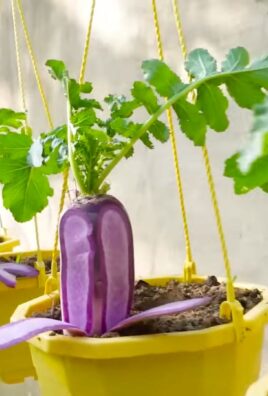
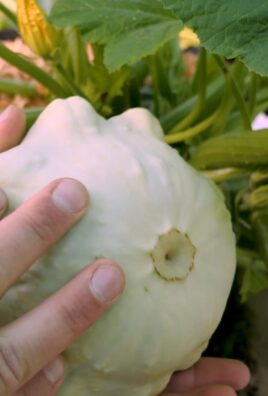
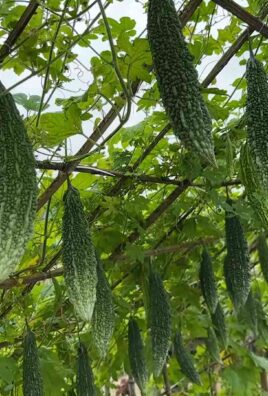
Leave a Comment